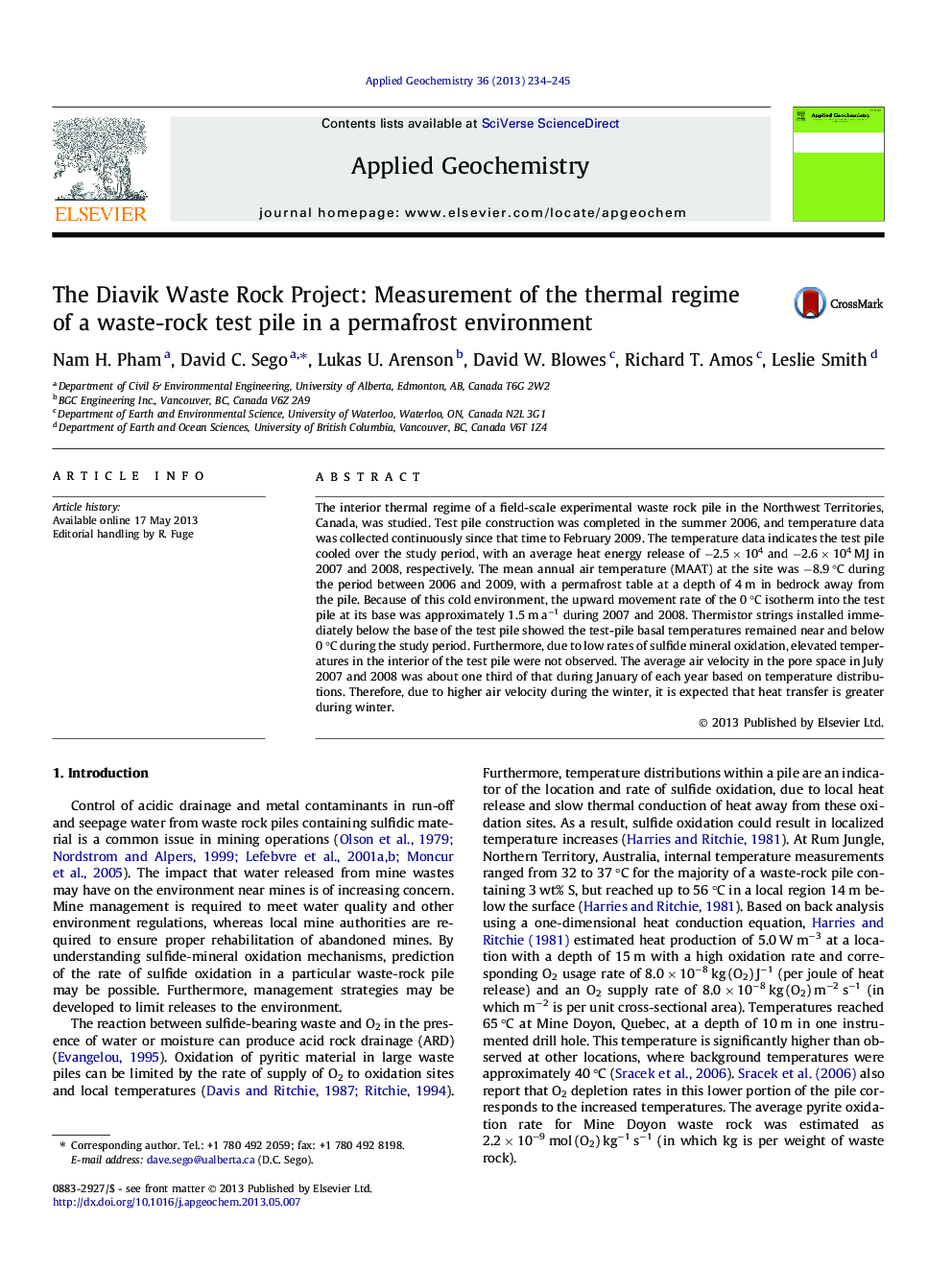| کد مقاله | کد نشریه | سال انتشار | مقاله انگلیسی | نسخه تمام متن |
|---|---|---|---|---|
| 4435999 | 1620255 | 2013 | 12 صفحه PDF | دانلود رایگان |

• The thermal regime of a test-scale waste rock pile in permafrost was studied.
• Thermal data was collected continuously from summer 2006 and to March 2009.
• Ambient temperatures, snow cover, wind and heterogeneity affect the thermal regime.
• The average heat energy release was −2.5 × 104 in 2007 and −2.6 × 104 MJ m−1 in 2008.
• The upward movement rate of the 0 °C isotherm into the pile was 1.5 m a−1.
The interior thermal regime of a field-scale experimental waste rock pile in the Northwest Territories, Canada, was studied. Test pile construction was completed in the summer 2006, and temperature data was collected continuously since that time to February 2009. The temperature data indicates the test pile cooled over the study period, with an average heat energy release of −2.5 × 104 and −2.6 × 104 MJ in 2007 and 2008, respectively. The mean annual air temperature (MAAT) at the site was −8.9 °C during the period between 2006 and 2009, with a permafrost table at a depth of 4 m in bedrock away from the pile. Because of this cold environment, the upward movement rate of the 0 °C isotherm into the test pile at its base was approximately 1.5 m a−1 during 2007 and 2008. Thermistor strings installed immediately below the base of the test pile showed the test-pile basal temperatures remained near and below 0 °C during the study period. Furthermore, due to low rates of sulfide mineral oxidation, elevated temperatures in the interior of the test pile were not observed. The average air velocity in the pore space in July 2007 and 2008 was about one third of that during January of each year based on temperature distributions. Therefore, due to higher air velocity during the winter, it is expected that heat transfer is greater during winter.
Journal: Applied Geochemistry - Volume 36, September 2013, Pages 234–245